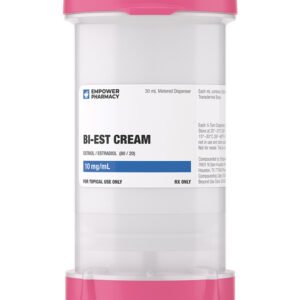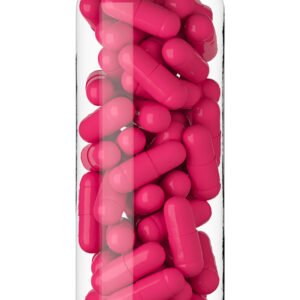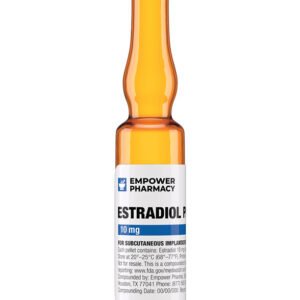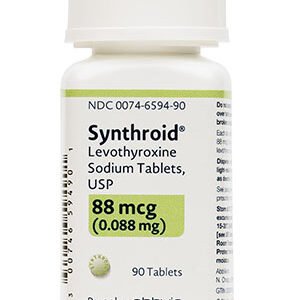Male patients can experience feminization during prolonged therapy with testosterone, which is believed to result from inhibition of gonadotropin secretion and conversion of androgens to estrogens. These effects are more pronounced in male patients with concurrent hepatic disease and include mastalgia and gynecomastia. In clinical evaluation of testosterone gel, gynecomastia (Testim: 1%; Androgel: 1—3%) and mastalgia (Androgel: 1—3%) were reported. Mastalgia and increased blood testosterone were reported in less than 1% of patients taking Axiron. Feminizing effects of testosterone are generally reversible. During exogenous administration of androgens, endogenous testosterone release is inhibited through feedback inhibition of pituitary luteinizing hormone (LH). At large doses of exogenous androgens, spermatogenesis inhibition may occur through feedback inhibition of pituitary follicle stimulating hormone (FSH). Similar to other testosterone therapies, decreased serum testosterone and oligospermia have been reported during post approval surveillance of testosterone topical gel.
Testosterone therapy can produce libido decrease or libido increase. In clinical evaluation of testosterone gel (Androgel), libido decrease was reported in 1—3% of patients. Priapism and excessive sexual stimulation, more common in geriatric males, are generally the effect of excessive testosterone dosage. In 205 patients receiving testosterone gel (Testim 50 or 100 mg daily), spontaneous penile erection (1%) was reported. During post approval experience with testosterone topical gel (Fortesta), priapism as well as impotence (erectile dysfunction) were reported.
Prostatic hypertrophy may develop during prolonged therapy with testosterone and these events are more likely to occur in elderly male patients. In 205 patients receiving testosterone gel (Testim 50 or 100 mg daily), benign prostatic hyperplasia, BPH was reported in 1% of patients. Clinical trials for testosterone patch (Androderm) include reports of unspecified prostate abnormalities in 5% of patients. Prostate neoplasm was reported in fewer than 1% of patients taking Axiron. In addition, increases in serum PSA concentrations have been reported in clinical trials for testosterone topical solution (Axiron: 1—4%), topical gel (Fortesta: 1.3%), and intranasal gel (Natesto: 5.1—5.8%). In a 180 Day, Phase 3 study of testosterone gel (Androgel), prostate disorder (3—5%) including enlarged prostate, BPH, and elevated PSA were reported; testis disorder (1.9—3%) including left varicocele and slight testicular sensitivity were also reported. In 162 hypogonadal men receiving testosterone gel (Androgel) during a 3-year open-label extension trial, increases in serum PSA concentrations (defined as >= 2x baseline concentrations or any single absolute value >= 6 ng/ml) were seen in approximately 18% of patients (n = 29). The majority of these increases were seen in the first year of therapy (23/29 or 79%). Four patients had a single value >= 6 ng/ml: 2 of these patients had prostate cancer detected upon biopsy. In the same study population, enlarged prostate and urinary symptoms including nocturia, urinary hesitancy, urinary incontinence, urinary retention, urinary urgency and weak urinary stream were also reported. Finally, 1 patient reported prostate disorder requiring a transurethral resection of the prostate (TURP) considered possibly related to treatment by investigators. Dysuria and hematuria have also been reported during postmarketing surveillance of testosterone therapy. Hematuria (< 3%), prostatitis (< 3%), and polyuria (< 3%) have been reported in patients receiving Androderm. In patients receiving testosterone therapy, surveillance for prostate cancer (as a secondary malignancy) should be consistent with current practices for eugonadal men. Signs of acute epididymitis (e.g., pyrexia, pain in the inguinal region) and/or urinary urgency should prompt withdrawal of the drug and reevaluation of dosage.
When androgens are given to females, virilization, manifested by acne, the growth of facial hair or an unwanted excess of body hair (hirsutism), enlarged clitoris, reduced breast size, and deepening of the voice, can occur. If testosterone treatment is discontinued when these symptoms first appear, they usually subside. Dermatologic reactions reported post-approval or in < 1% of patients using testosterone gel, regardless of brand, included hirsutism. Prolonged treatment can lead to irreversible masculinity, so the benefit of treatment should be measured against the risk. Disruption of the regular menstrual cycle secondary to testosterone-induced suppression of gonadotropin secretion can lead to amenorrhea or oligomenorrhea. Testosterone is associated with teratogenesis and may cause fetal harm. Exposure of a fetus (male or female) to androgens may result in varying degrees of virilization. Care should be taken to avoid exposure to testosterone during pregnancy, including via transfer of topical forms from male to female partners.
Topical testosterone products are associated with application site skin reactions. In clinical studies with testosterone patch (Androderm), transient mild to moderate erythema was observed at the site of application in the majority of patients at some time during treatment. The overall incidence of application site reactions of any kind was 28% (10 subjects with 13 adverse reactions). Application site adverse events reported include: pruritus (17—37%), burn-like blister reaction under system (12%), erythema (< 7%), exfoliation (< 3%), vesicular rash (6%), allergic contact dermatitis to the system (4%), burning (3%), and induration (3%); general rash (unspecified) (2%) was also reported. Blisters reported during trails sometimes involved bullous rash, skin necrosis, or the development of a skin ulcer. The majority of the lesions were found in cases where the patch was placed over bony prominences or on parts of the body that may have been subject to prolonged pressure during sleep or sitting. Other dermatological reactions at the application site, occurring in <1% of patients include: bullous rash, mechanical irritation, rash (unspecified), and contamination. Chronic skin irritation resulted in 5% of patients discontinuing treatment. Mild skin irritation may be ameliorated by treatment of affected skin with over-the-counter topical hydrocortisone cream applied after transdermal system removal. Additionally, applying a small amount of 0.1% triamcinolone acetonide cream to the skin under the central drug reservoir of the transdermal system has been shown to reduce the incidence and severity of skin irritation. The administration of 0.1% triamcinolone acetonide cream does not significantly alter transdermal absorption of testosterone from the system; ointment triamcinolone formulations should not be used for pretreatment as they may significantly reduce testosterone absorption. Dermatological reactions seen during testosterone topical solution (Axiron) clinical trials include: application site skin irritation (7—8%), erythema (5—7%), and folliculitis (< 1%). Other less common adverse reactions include: general erythema (< 1%) and application site edema and warmth (reported in at least 2 patients). Application site reactions have also been reported for testosterone gel (Fortesta: 16.1%; Androgel: 3—5.6%; Testim: 2—4%). Other dermatological reactions reported during clinical trials with testosterone gel (Androgel) include: xerosis (1.9%), acne (1—8%), and pruritis (1.9%). Contact dermatitis was reported in 2.1% of patients treated with testosterone gel (Androgel 1.62%). All testosterone therapy influences the growth and secretion of the sebaceous glands, which can cause seborrhea and acne indistinguishable from acne vulgaris. Acne vulgaris (> 1%) was reported in a clinical evaluation of testosterone solution (Axiron). Alopecia resembling male pattern baldness has also occurred in patients receiving long-term therapy or excessive testosterone doses. Dermatologic reactions reported post-approval or in < 1% of patients using testosterone gel, regardless of brand, include: acne, allergic dermatitis, diaphoresis, alopecia, erythema, hair discoloration, maculopapular rash, paresthesias, pruritus, rash (unspecified), skin irritation, swelling, and xerosis. During clinical evaluation and post marketing surveillance, hyperhidrosis (1.3%) was reported among patients receiving testosterone undecanoate.
The testosterone buccal mucoadhesive system can cause dental pain, such as gum or mouth irritation (9.2%), a bitter taste in the mouth (dysgeusia, 4.1%), gum pain (3.1%), gum tenderness (3.1%), gum edema (2%), or taste perversion (dysgeusia, 2%). The majority of gum-related adverse events were transient; gum irritation generally resolved in 1—8 days and gum tenderness resolved in 1—14 days. The following adverse events occurred in 1 patient during clinical trials: buccal mucosal roughening, gingivitis, gum blister, nose edema, stinging of lips, and toothache. In clinical trials, 4.1% of patients discontinued treatment due to gum or mouth-related adverse events. Gum examinations were conducted in one study to assess for gingivitis, gum edema, oral lesions, oral ulceration, or leukoplakia with no new or worsening cases of any of these anomalies reported. In two long-term extension trials, the following adverse events occurred in 1 patient each: buccal inflammation, xerostomia, gum redness, stomatitis, taste bitter/ taste perversion (dysgeusia), and toothache. Dysgeusia (reported as taste disorder) was reported in 1% of patients receiving testosterone gel (Testim) and judged possibly, probably, or definitely related to the study drug. However, dysgeusia has not been noted as a side effect with other topical or injectable testosterone products and topically applied and systemic testosterone are not recognized as a common cause of taste disturbance.
Early exposure to pharmaceutical doses of testosterone or other androgens in pre-pubertal males can induce virilism which can be a disadvantage because it is accompanied by premature epiphyseal closure. Once the epiphyses have closed, growth is terminated. Monitoring of skeletal maturation should be undertaken at about 6-month intervals. Once the epiphyses have closed, growth is terminated. Even after discontinuation of testosterone treatment, epiphyseal closure can be enhanced for several months.
Androgen therapy has been associated with retention of sodium, chloride, water, potassium, and inorganic phosphates. Peripheral edema can occur as the result of increased fluid retention (in association with sodium chloride) and may be manifested by weight gain. These effects may be more prominent earlier in androgen therapy. If normal therapeutic testosterone doses are used in the treatment of hypogonadism, only a moderate amount of fluid retention occurs. In the treatment of patients with impaired renal function or congestive heart failure, the fluid retention is of greater significance. Animal models suggest the ability of testosterone to induce blood pressure increases and to alter naturesis thus affecting vasoconstriction and stimulation of the renin-angiotensin-aldosterone system. Therefore, androgens may affect blood pressure; however, the current role of testosterone in blood pressure regulation is not well understood. Hypertension has been reported during clinical evaluation as well as post-approval surveillance of testosterone therapy. In clinical studies, 2.1—3% of patients receiving testosterone gel (Androgel) reported hypertension. Hypertension (1%) as well as decreased diastolic pressure (1%) were reported in trials involving testosterone gel (Testim). Hypertension (>1%) was reported in patients using testosterone topical solution (Axiron). In addition to affecting blood pressure, androgens may affect the prevalence of cardiovascular disease. The possible association between testosterone use and the increased risk of severe cardiovascular events, irrespective of pre-existing cardiac disease, is currently under investigation. An observational study in the U.S. Veteran Affairs health system included adult male patients of an average age of 60 years. Patients (n = 8709) undergoing coronary angiography with a recorded low serum testosterone concentration of < 300 ng/dl were included in the retrospective analysis. Within the larger cohort, testosterone therapy was initiated in 1223 males after a median of 531 days following coronary angiography; 7486 males did not receive testosterone therapy. Three years after coronary angiography, 25.7% of patients receiving testosterone therapy compared to 19.9% of patients not receiving therapy suffered a severe and/or fatal cardiovascular event (myocardial infarction, stroke, death). A second observational study, investigated the incidence of acute non-fatal myocardial infarction (MI) following an initial testosterone prescription in both younger (<= 55 years) and older (>= 65 years) adult males (n = 55,593). The incidence rate of MI occurring within 90 days following the initial testosterone prescription was compared to the incidence rate of MI occurring in the one year leading-up to the first prescription. Among older males, a 2-fold increase in the risk of MI was observed within the 90 day window; among younger males with a pre-existing history of cardiac disease, a 2- to 3-fold increased risk of MI was observed. In contrast, no increased risk was observed in younger males without a history of cardiac disease. In light of these findings, the FDA announced in early 2014 an examination into the possible link between testosterone therapy and severe cardiovascular events. The FDA has NOT concluded that FDA-approved testosterone treatment increases the risk of stroke, MI, or death. However, health care professionals are urged to carefully consider whether the benefits of treatment are likely to exceed the potential risks. The FDA will communicate their final conclusions and recommendations when the evaluation is complete.
Hepatic dysfunction can occur from use of certain androgens; therefore, periodic liver function test monitoring is advised. With use as prescribed, elevated hepatic enzymes are more likely to occur than overt jaundice or other liver dysfunction, which are rare with testosterone use in general. Adverse hepatic effects are more likely with administration 17-alpha-alkylandrogens (e.g., methyltestosterone) or with abuse of such androgenic hormones by athletes, where abuse results in liver changes consistent with fatty liver disease (steatosis) in an estimated 2.4% of individuals, even in the absence of other risk factors for fatty liver. Testosterone should be discontinued if cholestatic jaundice or hepatitis or other adverse liver dysfunction occurs. Peliosis hepatis and hepatic neoplasms occur rarely, but when they do, they are potentially life-threatening.
Headache has been reported in several testosterone therapy trials; incidence rates of headache range from 1—6%, regardless of formulation. Some incidences of mood alterations including emotional lability (< 3%), confusion (1%), depression (1—3%), nervousness (1—3%), anxiety (> 1%), anger (> 1%), asthenia (<1%), hostility (<1%), and mood swings (1%) have also been reported across several testosterone studies. Abnormal dreams (Fortesta: 1.3%) and insomnia (Testim: 1%) have been reported in patients receiving testosterone gel. Hot flashes or flushing (Testim: 1%) and asthenia (Androgel: 1—3%) were also reported for patients receiving testosterone. Diarrhea (3—4%) and vomiting (3—4%) have been reported among patients receiving testosterone solution (Axiron). Diarrhea (< 3%), gastroesophageal reflux disease (< 3%), back pain (6%), chills (< 3%), fatigue (< 3%) have been reported in patients receiving Androderm transdermal patch. Miscellaneous adverse reactions reported post-approval or in < 1% of patients using exogenous testosterone, regardless of formulation include: abdominal pain (cramps), abnormal renal function, appetite stimulation, asthma, dizziness, hyperglycemia, increased lacrimation, malaise, nausea, pain in extremity (musculoskeletal pain), pelvic pain, and vitreous detachment. Other miscellaneous reactions reported during post approval surveillance of testosterone undecenoate include: sudden hearing loss, tinnitus, and myalgia.
Testosterone therapy has induced osteolysis and can exacerbate hypercalcemia. Androgen-induced hypercalcemia occurs especially in immobile patients and those with metastatic carcinoma of the breast. Skeletal adverse reactions reported during post approval surveillance of testosterone undecanoate included osteopenia and osteoporosis.
Testosterone may cause undesirable changes in serum lipid profiles, including hypercholesterolemia or hypertriglyceridemia. Periodic monitoring of lipid profiles may be desirable during treatment. Observational studies in post-menopausal women, bodybuilders, and weightlifters using anabolic steroids have revealed ‘pro-atherogenic’ changes in lipid profiles, including decreases in HDL concentrations and increases in LDL concentrations. Synthetic androgens may produce a greater lowering of the HDL-C:LDL-C ratio than does testosterone. Although the implications of androgen-induced hypercholesterolemia are unclear, caution should be exercised, particularly in patients predisposed to dyslipidemia or atherosclerosis. If lipid changes are significant, dose adjustment of testosterone or lipid lowering drugs or discontinuation of testosterone treatment may be needed; individualize therapy.
Testosterone has a stimulatory effect on the formation of erythropoietin. Increased erythropoiesis, especially in women, can lead to erythrocytosis, secondary polycythemia, and its complications including: dizziness, migraine, tiredness (fatigue), unusual bleeding, flushing, or redness of the skin. Patients receiving high doses of testosterone are at risk for polycythemia. In clinical evaluation of testosterone solution (Axiron), increases in red blood cell count (< 1%), hematocrit (4—7%), and hemoglobin (> 1%) were reported. In studies of testosterone gel (Testim), patients receiving a 100 mg dose had clinically notable increases in both hematocrit (2.8%) and hemoglobin (2.3%). Likewise, 2.1% of patients treated with testosterone gel (Androgel 1.62%) reported increased hematocrit or hemoglobin. In intranasal testosterone gel analysis, 4 of 306 exposed patients developed a hematocrit level > 55% (baseline: 48—51%; did not exceed 58%). Therefore, periodic hemoglobin and hematocrit determinations should be considered in patients receiving long-term testosterone therapy. In general, testosterone therapy has been associated with suppression of clotting factors II, V, VII, and X and bleeding in patients on concomitant anticoagulant therapy. GI bleeding was reported in 2% of patients receiving testosterone patch (Androderm) therapy during clinical evaluation. Hemarthrosis (< 3%) has also been reported Androderm. During postmarketing surveillance of testosterone gel (Testim), prolonged aPPT and PT and prolonged bleeding time were reported. Anemia was reported in 2.5% of patients receiving testosterone gel (Androgel) during clinical evaluation. An increased risk of deep vein thrombosis (DVT) and acute pulmonary embolism (PE) is associated with testosterone use; events have been reported during post-marketing surveillance. Discontinue treatment with testosterone in patients reporting pain, swelling, warmth, and redness in the leg (DVT) or chest pain, trouble breathing, and cough (PE) and examine for possible VTE. Other miscellaneous reactions reported during post approval surveillance of testosterone undecenoate include: thrombocytopenia, hyperparathyroidism, and hypoglycemia.
Intramuscular administration of anabolic steroids can cause inflammation, erythema, urticaria, post injection pain, induration and furunculosis. Inflammation and pain at the site of insertion of testosterone implant pellets is possible. Testosterone pellets may also slough out from the insertion site, which is usually secondary to superficial implantation or aseptic technique. Patients should be observed for any signs of an injection site reaction.
Few cases of anaphylactoid reactions have been reported in association with oral and injectable testosterone therapy. Administration of testosterone undecanoate has been associated with cases of pulmonary embolism, specifically serious pulmonary oil microembolism (POME) reactions as well anaphylactoid reactions. Reported cases of POME reactions occurred during or immediately after a 1000 mg intramuscular injection of testosterone undecanoate. Symptoms included: cough, urge to cough, dyspnea, hyperhidrosis, throat tightening (acute bronchospasm), chest pain, dizziness, and syncope. Most cases lasted a few minutes and resolved with supportive measures; however, some lasted up to several hours and some required emergency care and/or hospitalization. In addition to POME reactions, episodes of anaphylaxis, including life-threatening reactions, have also been reported following the intramuscular injection of testosterone undecanoate. Overall, 9 POME events in 8 patients and 2 events of anaphylaxis among 3556 patients treated with testosterone undecanoate were reported in 18 clinical trials; cases of both POME and anaphylaxis were also reported post-approval. Cases have occurred following initial injection as well as during later injections in the normal course of treatment. After every administration, monitor patient for 30 minutes and provide appropriate medical treatment in the event of serious POME or anaphylactoid reactions. Due to the risk of serious POME and anaphylaxis reactions, testosterone undecanoate (Aveed) is only available through a restricted program called the Aveed REMS Program. Clinicians wanting to prescribe Aveed, must be certified with the REMS Program for purposes of ordering or dispensing the product. Healthcare settings must also be certified with the REMS Program and must have the resources to provide emergency medical treatment in cases of serious POME and anaphylaxis. Further information is available at www.AveedREMS.com or call 1—855—755—0494. Transient respiratory reactions including the urge to cough, coughing fits, and respiratory distress immediately after intramuscular injection of testosterone enanthate have been reported during post-marketing surveillance. Care should be taken to ensure slow and deep gluteal muscle injection of testosterone preparations. Nasopharyngitis or pharyngitis (> 1 %) was reported in patients receiving testosterone topical solution (Axiron).
The treatment of hypogonadal men with testosterone may increase the risk of sleep apnea, especially in patients with risk factors for sleep apnea, such as obesity or chronic lung disease.
In clinical evaluation of intranasal testosterone gel, the following nasal adverse reactions were reported among the most common adverse events: nasopharyngitis (3.8—8.7%), rhinorrhea (3.8—7.8%), parosmia (5.8%), epistaxis (3.8—6.5%), nasal irritation or discomfort (3.8—5.9%), nasal scabbing (3.8—5.8%), nasal dryness (4.2%), nasal congestion (3.9%), and procedural pain (4.3%). Although the majority of nasal complaints were mild or moderate in severity, long-term data on nasal safety is limited. Advise patients to report any distressing nasal symptoms; if present, determine the need for further evaluation or continued treatment. Other reported respiratory adverse reactions, include: bronchitis (3.8—4.3%), upper respiratory tract infection (3.8—4.3%), and sinusitis (3.8%).
Call your health care provider immediately if you are experiencing any signs of an allergic reaction: skin rash, itching or hives, swelling of the face, lips, or tongue, blue tint to skin, chest tightness, pain, difficulty breathing, wheezing, dizziness, red, swollen painful area on the leg.






Reviews
There are no reviews yet.